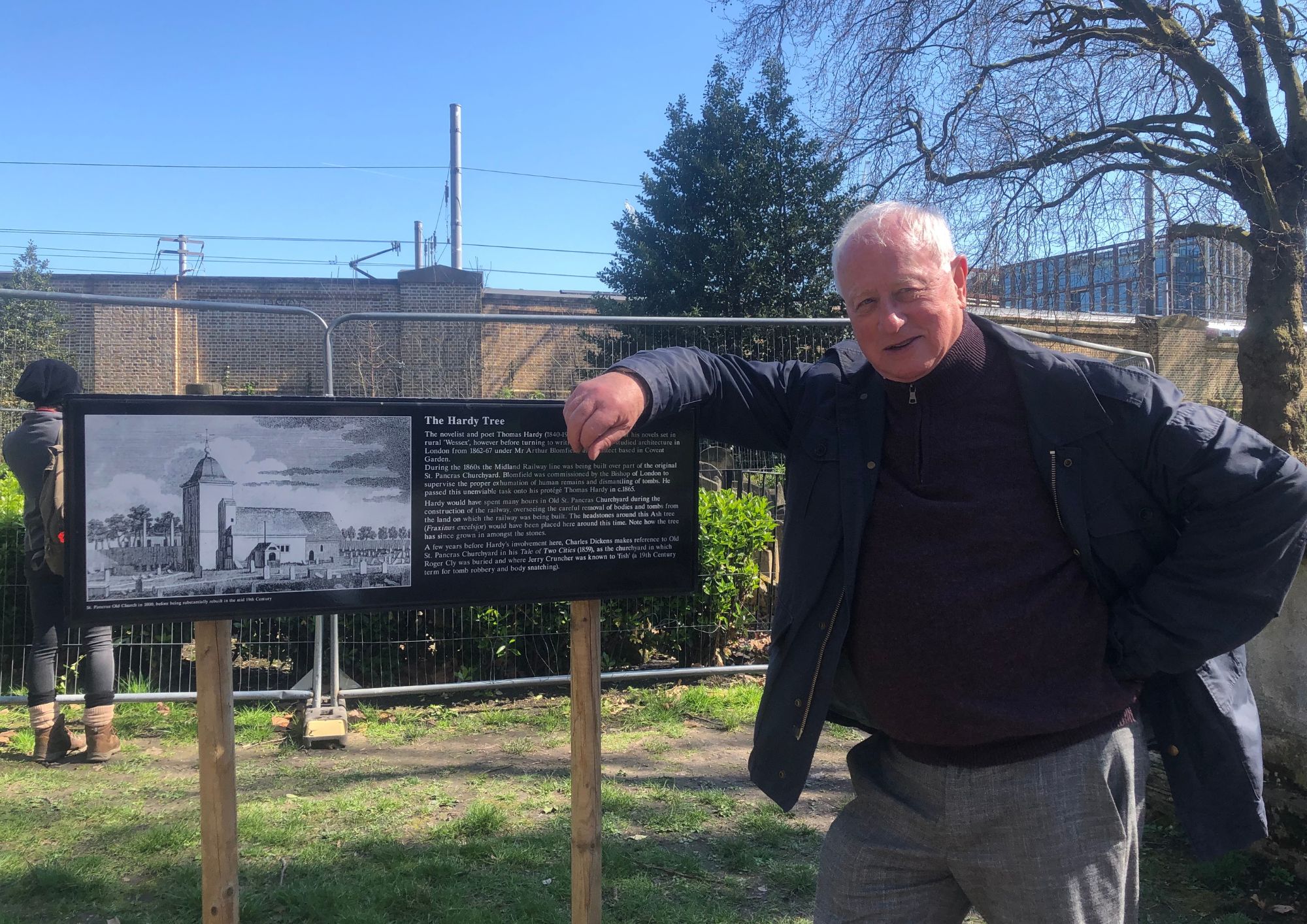Forget everything you thought you knew about ‘The Hardy Tree'
Former archivist 'horrified' by council information panels
Friday, 14th April 2023 — By Dan Carrier

Malcolm Holmes at the signs in front of where the tree stood
THE image of the young poet sweating from heavy toil is a romantic one.
Thomas Hardy penned various poems which reference the quiet stillness of a graveyard, giving rise to one of Camden’s most enduring myths.
It has long been believed Hardy – the novelist who gave us such classics as Tess of the D’Urbervilles, Jude The Obscure and The Mayor of Casterbridge – spent time as a young man piling up tombstones around the trunk of an ash tree in St Pancras burial grounds.
The story has been oft repeated and was aired once more in early March when the ash, known as the Hardy Tree, collapsed in a storm.
But this charming idea is nonsense, according to research by historian Malcolm Holmes, the retired borough archivist and leading expert on the history of Camden. He said this week that the tree was not even a seedling when Hardy was lugging lumps of stone out of the way of freshly laid railway tracks.
The Hardy Tree is in fact a self-seeded ash that appeared long after the tombstones were piled up – and while the writer did help dig up and move coffins from the burial ground, the tombstones were placed in their current position decades after Hardy had left London.
Mr Holmes said: “Such concern has been expressed about a tree around whose trunk Thomas Hardy was said to have piled tombstones, when he carried out work in St Pancras Churchyard in the 1860s. I am sorry to expose the myth that has grown up about this, as I know even tour guides use this story in their walks. There is not a word of truth in it.”
In 1866, when the Midland Railway was being laid, Hardy had the job of overseeing the removal of bodies. But he had nothing at all to do with the tombstones Mr Holmes said, adding that “the evidence to refute the myth is very reliable”.
Mirroring his fictional detective namesake, Mr Holmes has embarked on a historic treasure hunt to tie together the facts. His first exhibit is a photograph dating from 1926, which shows the tombstones with no tree growing among them. Mr Holmes said: “It is clear that after this photograph was taken, an ash seed germinated within the pile of stones.”

Local history expert Malcolm Holmes was formerly Camden Council’s archivist
He also looked at the tombstones to see if he could glean clues.
“I examined every tombstone in the pile and copied the inscriptions, looking at every name and date, and any address shown,” he said. “It was obvious they related to people who had lived in St Giles in the Fields Parish, not St Pancras. I checked the burial registers for St Giles where I had a name and date, but no address, and found entries there. I could not find a single one from a St Pancras burial.”
In 1854 a law was passed that shut burial grounds that were poorly maintained. Many became gardens and squares, and Mr Holmes investigations prove that the gravestones could not have been brought to the site before 1877 – long after Hardy had left for Dorset.
Yet the Hardy myth has endured – partly thanks to the Town Hall, which looks after the grounds. In 2001 the council restored the open space and a new information board was designed and Camden said it was looking at ways to commemorate the tree after it fell.
Mr Holmes said: “I was horrified to see information panels contained errors repeating the fictional story. Someone decided a fairy tale was better than facts.”